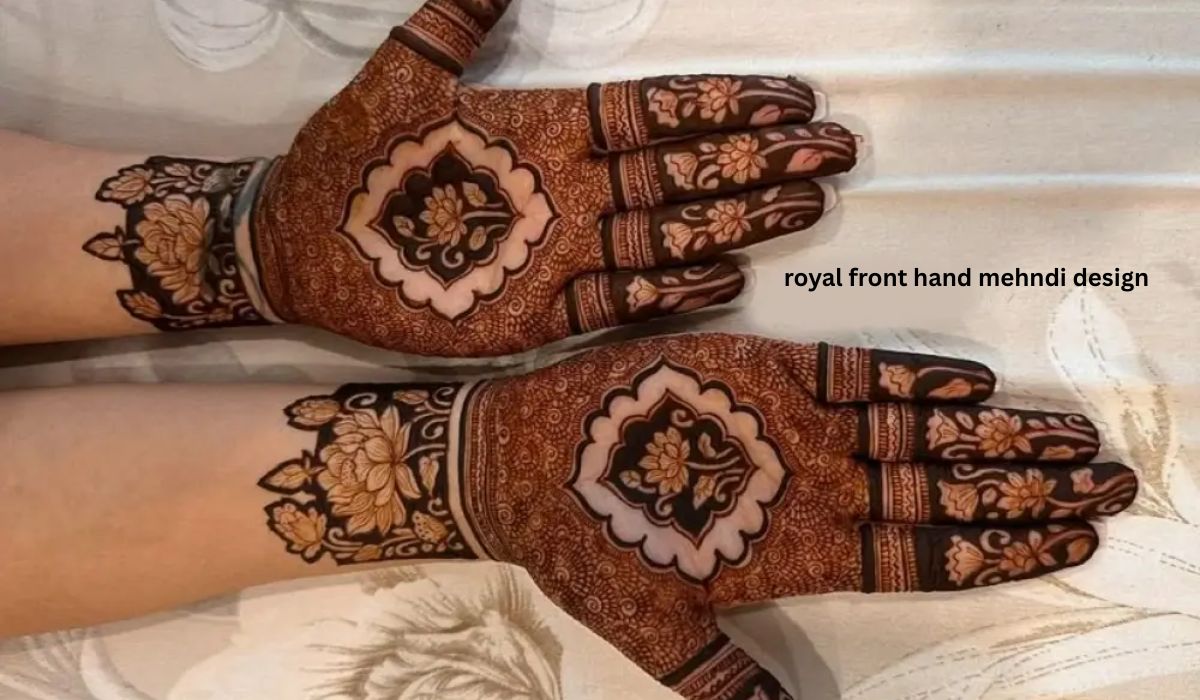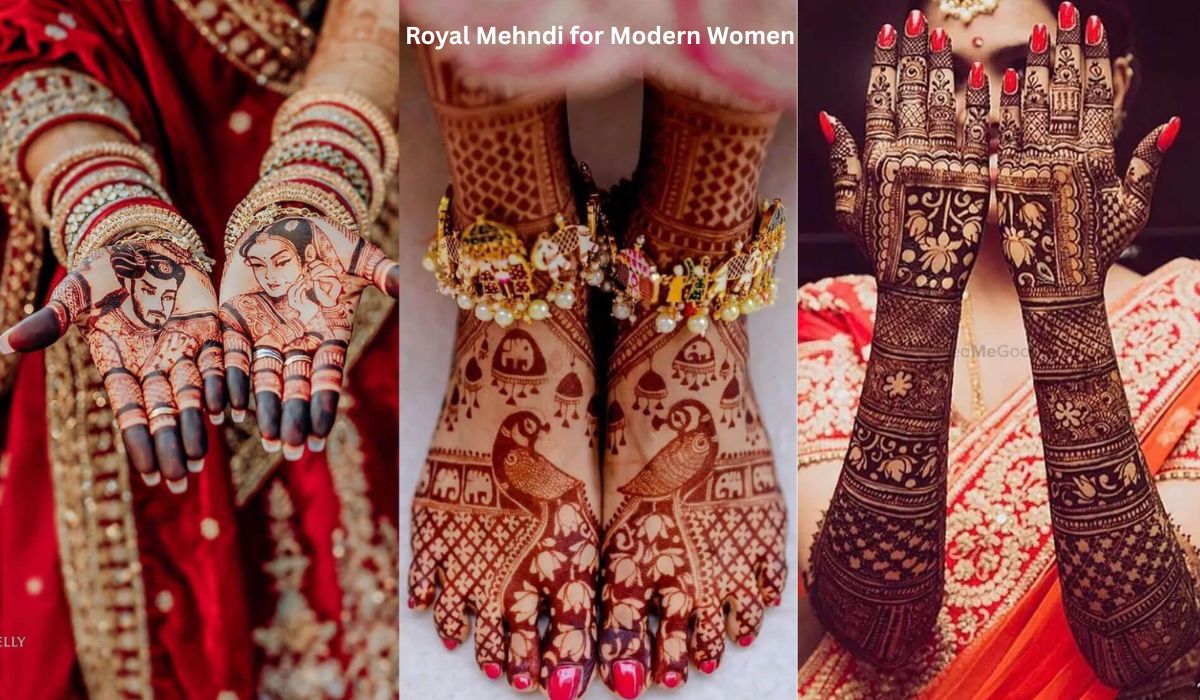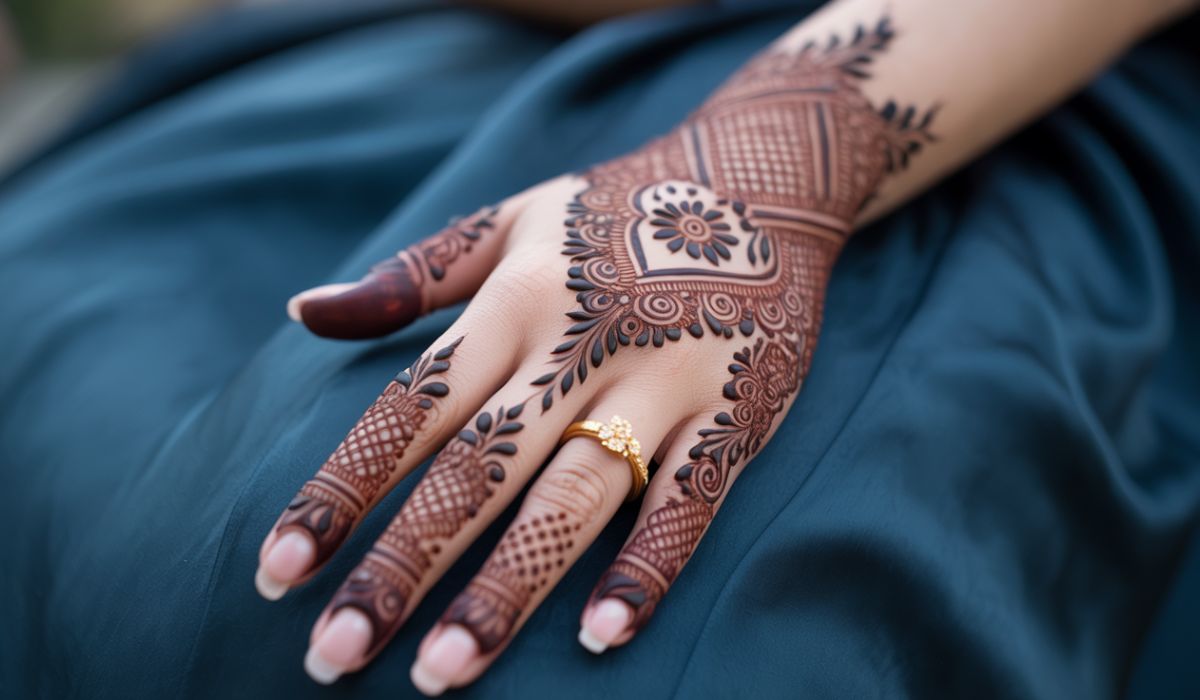Introduction
When it comes to beautifying hands for special occasions, nothing quite captures elegance like a royal front hand mehndi design. It’s more than just a tradition—it’s a timeless art that brings stories to life on your skin. Whether you’re preparing for a wedding, festival, or just want to indulge in some self-love, mehndi offers a magical touch that’s both soothing and stunning.
In this guide, we’ll dive deep into the world of royal front hand mehndi designs—exploring patterns, history, techniques, trends, and even the emotions tied to this art form. Ready to get your hands beautifully inked with inspiration? Let’s begin.
The Essence of Mehndi: A Touch of Heritage
Before we dive into the details, let’s understand what makes mehndi so special. Mehndi, also known as henna, is a paste made from crushed leaves of the Lawsonia plant. Applied as temporary body art, it’s been a cultural staple in South Asian, Middle Eastern, and African communities for centuries.
Imagine it like painting memories on your skin—each swirl and motif telling a story passed down through generations. That’s the beauty of mehndi.
What Makes a Design ‘Royal’?
You might be wondering—what exactly defines a royal mehndi design?
Think of it like a royal gown—intricate, majestic, and rich in detail. Royal front hand designs usually include complex patterns, symmetrical layouts, and traditional motifs like peacocks, lotuses, paisleys, and fine netting. These designs are not just decorative; they reflect luxury and tradition.
History of Royal Mehndi in Ancient Culture
Mehndi has roots tracing back over 5,000 years. Historically, queens and brides from royal families would wear detailed mehndi designs as a mark of beauty, fertility, and good fortune. In places like India, Pakistan, and Morocco, mehndi was often used in spiritual rituals, symbolizing protection and blessings.
These age-old designs were not made with the same convenience we have today. Artisans would spend hours—sometimes days—adorning the hands of royals. That’s the kind of dedication that made the art truly regal.
Key Elements of Royal Front Hand Designs
Let’s break down the core components that make these designs so majestic:
1. Symmetry and Precision
Royal designs are always symmetrical—mirror images from one side of the palm to the other. This balance signifies harmony and grace.
2. Dense Patterns
Unlike minimalistic modern styles, royal designs fill every inch of skin. They may feature floral vines, jali (net), domes, or Mughal-inspired architecture.
3. Bridal Motifs
Brides often go for designs with names, portraits of the groom, or sacred symbols like mandalas or kalash.
4. Layered Detailing
Multiple layers—like petals within petals or paisleys stacked upon vines—add depth and richness to the overall look.
Top Royal Front Hand Design Styles
1. Mughal-Inspired Grandeur
These designs resemble the majestic artwork seen in Mughal palaces—domes, floral borders, and architectural symmetry.
2. Rajasthani Heritage
From dancing figures to musical instruments, Rajasthani-style mehndi reflects the state’s cultural richness and regal pride.
3. Bridal Masterpieces
These are typically elbow-length, with names hidden, portraits sketched, and intricate details that look like fine embroidery.
4. Arabic Fusion
While Arabic mehndi is usually spaced and bold, when blended with royal patterns, it creates a modern royal look that’s less dense but equally dramatic.

Tools and Materials for a Royal Look
You don’t need a royal court to try royal mehndi—just the right tools:
-
Organic Henna Cone: Always choose natural henna for richer, safer color.
-
Fine-Tip Applicator: Needed for the ultra-thin lines royal designs require.
-
Essential Oils: Lemon, eucalyptus, or clove oils deepen the stain.
-
Mehndi Stencils (Optional): Helpful for beginners to maintain symmetry.
Step-by-Step: Creating a Royal Front Hand Design
Even if you’re not an expert, here’s how to try a simple royal design:
-
Prep the Hand: Clean your hand thoroughly and pat it dry.
-
Sketch the Outline: Lightly draw the central motif with white eyeliner.
-
Start from the Center: Begin with a circle, mandala, or paisley in the middle of your palm.
-
Add Layers: Gradually add vines, petals, and borders around your motif.
-
Balance Both Hands: Use a mirror for symmetry if doing both hands.
-
Finish with Fingers: Designs on fingers often include fine mesh, leaf patterns, or spiral chains.
How to Make Mehndi Color Darker
Let’s be real—everyone wants that rich, deep maroon stain. Here’s how you can boost the color:
-
Apply a lemon and sugar mix once the mehndi dries.
-
Leave it on for at least 6–8 hours (overnight if possible).
-
Use heat or steam to lock in the color—like warming your hands over a stove briefly.
-
Avoid water for 24 hours after removal.
-
Don’t use soap or lotion too soon.
Occasions Fit for Royal Mehndi
Royal mehndi isn’t just for weddings. Here’s when you can flaunt those regal hands:
-
Eid Celebrations
-
Diwali or Karva Chauth
-
Engagement Parties
-
Anniversaries
-
Baby Showers
-
Navratri or Cultural Shows
Remember, mehndi isn’t limited to brides—it’s for anyone who wants to celebrate with style.
Royal Mehndi for Modern Women
Today’s woman wants beauty and convenience. If you love tradition but have little time, opt for half-hand royal patterns or pre-made mehndi stickers. These allow you to enjoy the charm of heritage without spending hours.
A royal design today might even feature initials, hearts, or minimalist florals in bold royal layouts. That’s the fusion of classic and modern.

Common Mistakes to Avoid
Even the best designs can fall flat if not done right. Here’s what to avoid:
-
Rushing the Process: Royal designs need patience.
-
Using Chemical Cones: They can damage skin and result in poor color.
-
Skipping Aftercare: Not sealing or warming your mehndi can leave it faint.
-
Not Practicing: If you’re new, practice basic patterns before trying complex ones.
Why Mehndi Feels Therapeutic
Did you know applying mehndi is more than just beauty—it’s calming?
Henna naturally cools the body, relieves stress, and has anti-inflammatory properties. It’s why so many brides say it helps with wedding jitters. Think of it like a warm cup of herbal tea—relaxing, natural, and full of comfort.
Conclusion
In a world moving fast, some things remain eternal—like the charm of a royal front hand mehndi design. It’s not just a trend or a ritual—it’s a celebration of culture, beauty, and self-expression.
Whether you’re preparing for a grand occasion or simply want to feel special, royal mehndi designs let your hands tell a story—one curve at a time.
So next time you hold a henna cone, remember: you’re not just drawing lines. You’re carrying forward a legacy of grace, color, and connection.
FAQs
1. How long does royal mehndi last on the hands?
Typically, it lasts 7–10 days, depending on your skin type, aftercare, and the quality of the henna used.
2. Can I apply royal mehndi designs myself at home?
Yes! With a little practice and patience, you can create simple royal designs at home using tutorials or stencils.
3. Is there any way to remove mehndi quickly if needed?
Yes, exfoliating with lemon juice, baking soda, or oil-based scrubs can help lighten the stain. However, mehndi naturally fades over time.
4. What’s the best time to apply mehndi for a wedding or event?
Apply it 1–2 days before the event to allow the stain to fully develop and reach its darkest shade.
5. Do royal designs take longer to apply than regular ones?
Absolutely. Because of the fine detailing and dense patterns, a full royal front hand design can take anywhere from 1.5 to 3 hours.
For More More Visit: Creative Blog


